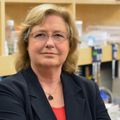Stem Cells for Regeneration and Rescue
Most discussions about pluripotent stem cells center around their promise for regenerative medicine. The most remarkable quality of these cells is their ability to turn into all of the cell types in the body. This amazing power is driving all of the projects in our lab that range from treatment of human disease to rescue of endangered species. One of our projects is development of an autologous cell replacement therapy for Parkinson’s disease (PD). We have used non-integrating Sendai virus to reprogram skin cells into induced pluripotent stem cells (iPSCs) from ten people afflicted with PD. Since death of dopamine neurons in the brain leads to the motor symptoms of PD, we have developed methods for generating dopamine neurons from iPSCs and plan to use these cells for autologous transplants, which should eliminate the need for immunosuppression. On the other end of the spectrum, we are using iPSCs in an effort to save endangered species. We are generating iPSCs from fibroblasts stored in the Frozen Zoo® at the San Diego Wild Animal Park. We are focusing on the Northern White Rhino, which will be extinct in our lifetimes. Only 3 members of this species remain alive. But there are fibroblasts from 12 individuals stored in the Frozen Zoo, and we have made iPSCs from two so far. We are generating iPSCs from the rest, and plan to differentiate them into gametes- this has been achieved for mice, but we don’t expect it to be easy for rhinos. If we succeed, and can make fertilized embryos in the lab, there are 6 females from the closely related Southern White Rhino species already at the zoo who will serve as surrogate mothers. The astounding power of pluripotency has opened doors to new ideas; we’re just getting started.





